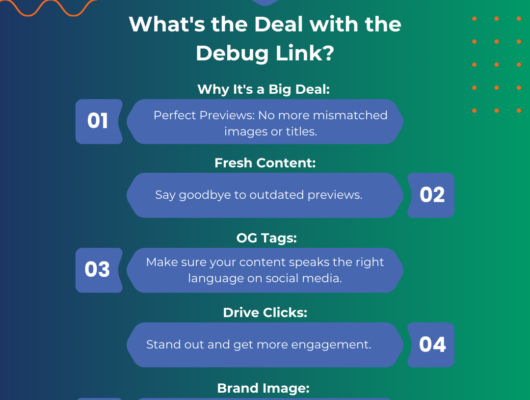In the fast-paced digital landscape of smart home technology, AV installation, and home services, your website is your most powerful sales tool. But what if your own site is secretly sabotaging your success? This is the often-overlooked threat of CRO cannibalization, a phenomenon where your own pages compete against each other, diluting your marketing efforts and diminishing conversion rates. Couple this with the complexities of a CRO domain migration, and the potential pitfalls for your SEO and revenue can multiply.
At Praesto Marketing, we delve into advanced SEO strategies to ensure our clients not only rank but also convert. This post will illuminate the intricacies of CRO keyword cannibalization (and its UK spelling twin, CRO keyword cannibalisation), explain its profound impact, and provide actionable strategies to resolve it. We’ll also explore how to navigate domain migrations without sacrificing your hard-earned search equity, ensuring you stay ahead of competitors.
Understanding the Beast: Keyword Cannibalization vs. CRO Cannibalization
Before diving into solutions, let’s clarify terms.
- Keyword Cannibalization: This occurs when multiple pages on your website target the same or very similar keywords and search intents. Instead of one strong page ranking highly, Google gets confused, often resulting in several of your pages ranking poorly or fluctuating wildly. Imagine two of your service pages vying for “smart home security installation” – they’ll likely split the authority and rank lower than a single, optimized page.
- CRO Cannibalization: Taking this a step further, CRO cannibalization (Conversion Rate Optimization cannibalization) is when multiple pages compete for the same conversion goal or user action. As Alterior Digital aptly puts it, “CRO cannibalization occurs when multiple pages on a website compete for the same primary keyword (focus keyword) or conversion goals.” Essentially, if keyword cannibalization is an SEO conflict, CRO cannibalisation is the resulting conversion conflict, often leading to lost leads and sales.
Why CRO Cannibalization is More Than Just an SEO Headache
Ignoring CRO cannibalization can have severe repercussions for your business:
- Lost Search Visibility: Competing internal pages confuse search engines, often pushing both down in rankings. Instead of a top 3 spot, you might have pages languishing on positions 7 and 9.
- Diluted Authority & Backlinks: Link equity, crucial for SEO, gets split across multiple weaker pages instead of concentrating on one authoritative resource. If one page has 10 backlinks, it’s stronger than two pages with 5 each.
- Perceived Lower Content Quality: Multiple pages on the same topic can appear repetitive and low-value to Google, potentially impacting quality scores and indexation. Users also notice, eroding trust.
- Confusing User Experience & Lower Conversion Rates: This is critical. If a user lands on a suboptimal page because your better-converting page was cannibalized, you risk losing that lead. This confusion directly impacts your sales funnel, especially in trust-centric industries like home security.
- Wasted Crawl Budget: Search engine crawlers spend valuable time on redundant pages, potentially delaying the discovery of new or more important content.
In essence, CRO keyword cannibalization isn’t just a technical flaw; it’s a direct drain on your marketing ROI, leading to lost organic traffic, weakened brand authority, and ultimately, fewer conversions.
Spotting the Sneaky Signs of CRO Cannibalization
How do you diagnose this internal competition?
- Google “site:” Queries: Search
site:yourwebsite.com "your target keyword". Multiple pages appearing for the same term is a red flag. - Google Search Console (GSC): Check the Performance report. If a single query lists multiple URLs from your site, especially if their positions fluctuate or are unexpectedly low, you likely have an issue.
- SEO Tools: Platforms like Ahrefs, SEMrush, or Moz have specific reports to detect keyword cannibalization, flagging when multiple URLs rank for the same keyword.
- Analytics Symptoms: Unusually high bounce rates or low conversion rates on pages that should be performing well can indicate users are landing on the “wrong” page.
- Internal Content Audit: Catalog your pages and their primary keywords. Overlaps in focus keywords or page titles often reveal cannibalization.
Pro Tip: If you have two pages ranking in the top 10 for a keyword, but neither is in the top 3-5, it’s a cannibalization problem. One strong result nearly always beats two mediocre ones.
Actionable Strategies: Fixing and Preventing CRO Cannibalization
Once identified, here’s how to tackle CRO cannibalization:
- Develop a Clear Keyword & Content Strategy: Map each important keyword to one dedicated page. Use long-tail keywords to differentiate.
- Consolidate Redundant Content: Merge similar pages into a single, comprehensive, authoritative page. Implement 301 redirects from the old URLs to the new one. This is often the most effective fix.
- Differentiate Similar Pages: If pages must remain separate, sharpen their unique value propositions and keyword focus to target distinct angles or audience segments. Update titles, headings, and content accordingly.
- Optimize Site Structure & Internal Linking: Use a clear hierarchy (e.g., pillar pages and topic clusters). Strategically use internal links to signal the most important page for a given topic.
- Leverage Canonical Tags: For pages that are very similar and must coexist (e.g., print versions, some tracking URL variations), use
rel=canonicalto point to the primary version. - Consider Noindex or Removal: For genuinely low-value duplicate pages that aren’t worth merging, a
noindextag can remove them from search results, though 301 redirects or canonicals are usually preferred for consolidating authority. - Perform Regular Content Audits: Periodically review your content to catch emerging overlaps, especially as your services and industry evolve.
- Educate Your Team: Ensure everyone involved in content creation understands CRO cannibalization and adheres to a coordinated strategy.
Navigating the Treacherous Waters of CRO Domain Migration
A CRO domain migration (moving your website to a new domain name) is one of the riskiest SEO endeavors. It might be necessary for a rebrand or acquisition, but it must be handled with extreme care to preserve SEO and CRO effectiveness.
Key considerations for a successful CRO domain migration:
- Justify the Move: Is it absolutely necessary? The SEO risks can be substantial. The famous WooCommerce domain change attempt in 2023, which led to catastrophic traffic loss and an eventual rollback, serves as a stark warning.
- Pre-Migration SEO Audit: Benchmark current performance. Identify top pages, keywords, and backlinks. This data is crucial for protecting assets. This is also a prime opportunity to address existing CRO cannibalization by not migrating redundant pages.
- Meticulous URL Mapping & 301 Redirects: This is the heart of a migration. Map every old URL to its new counterpart and implement 301 redirects immediately upon launching the new domain. This prevents old and new content from competing and consolidates SEO signals. Prolonging dual-running sites will split rankings and weaken authority, creating cross-domain CRO cannibalisation.
- Carry Over Content & SEO Elements: Initially, migrate high-performing content and metadata “as is” to isolate variables. Improvements can be made iteratively post-migration once rankings stabilize.
- Domain Consolidation Strategy: If merging multiple domains, audit for keyword overlap between the sites. Consolidate duplicative pages into single, stronger versions on the new domain, redirecting all old versions to it.
- Post-Migration Monitoring: Closely watch GSC for errors, indexing status, and ranking fluctuations. Monitor conversion metrics to ensure tracking and user journey elements are functioning correctly.
- Business Strategy Alignment: Frame the migration in terms of risk vs. reward for stakeholders. Consider phased approaches if feasible.
A domain migration is a high-stakes project. Done right, especially if you clean up legacy CRO cannibalization issues in the process, you can emerge stronger. Done poorly, it can devastate your traffic and conversions.
Quick Reference: CRO Cannibalization Causes & Solutions
| Cause of Cannibalization | Symptom/Impact | Solution |
|---|---|---|
| Lack of clear keyword strategy; multiple pages targeting the same primary keywords. | Multiple pages from your site appear for the same query; organic traffic split; neither page dominates rankings. | Create a keyword/content map; implement editorial review; use long-tail keywords and distinct angles for each page. |
| Duplicate or heavily overlapping content across different pages (e.g., similar service pages, old blog posts). | Lowered rankings for all similar pages; perceived low content quality by Google; confusing user experience. | Merge/consolidate similar content into one strong page with 301 redirects; differentiate content significantly if pages must remain separate; use canonical tags. |
| Site structural issues or incomplete domain migration processes leading to old and new content competing. | Search engine confusion; old and new URLs competing; duplicate content indexed across domains; users finding outdated pages. | For domain migrations, implement comprehensive 301 redirects immediately; ensure only one version of content is indexable; canonicalize or remove lingering duplicates. |
Take Control of Your Conversions
CRO cannibalization and poorly managed CRO domain migrations can silently erode your online presence and profitability. By understanding these challenges, diligently auditing your site, and implementing targeted strategies, you can ensure every page on your website works for you, not against you.
Need expert guidance to identify and resolve CRO cannibalisation or plan a seamless CRO domain migration? The specialists at Praesto Marketing are here to help you optimize your digital assets for maximum impact and growth. Contact us today.








